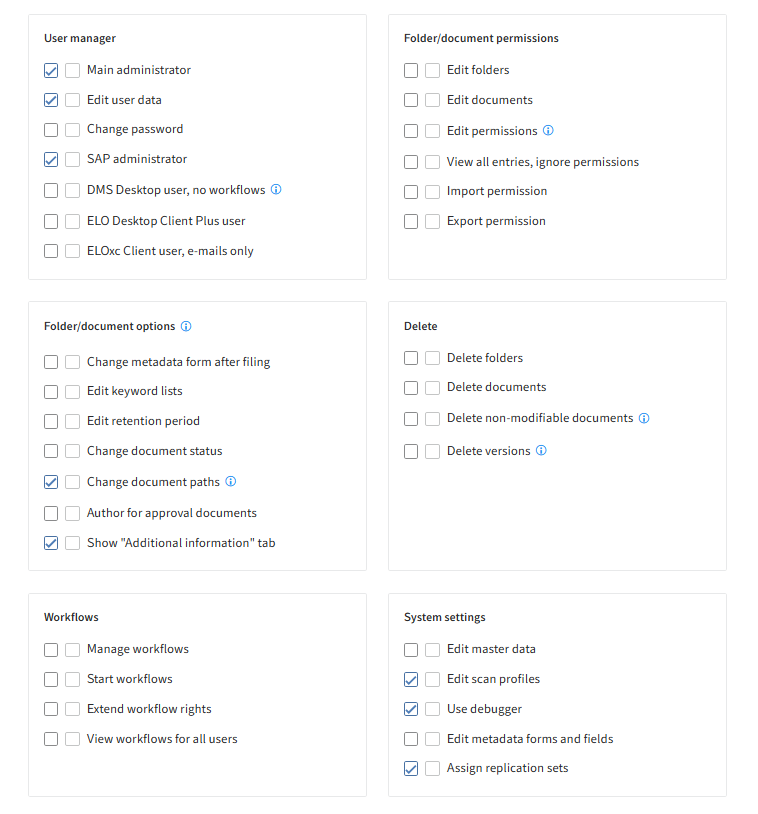# Assigning user rights
In response to the first question of what tasks the employee has in the company, we can assign user rights. Depending on what the data and documents in the ELO repository will be used for, you can assign user rights via different groups. In our example of a rights concept, we distinguish between five different groups of user rights.
# ELO view users
The members of this group may only view folders and documents, apply annotations and notes, or write feed posts. They cannot make changes to the metadata, edit the document in any way, or delete it. These users can perform searches in the repository but do not enter content or file items themselves.
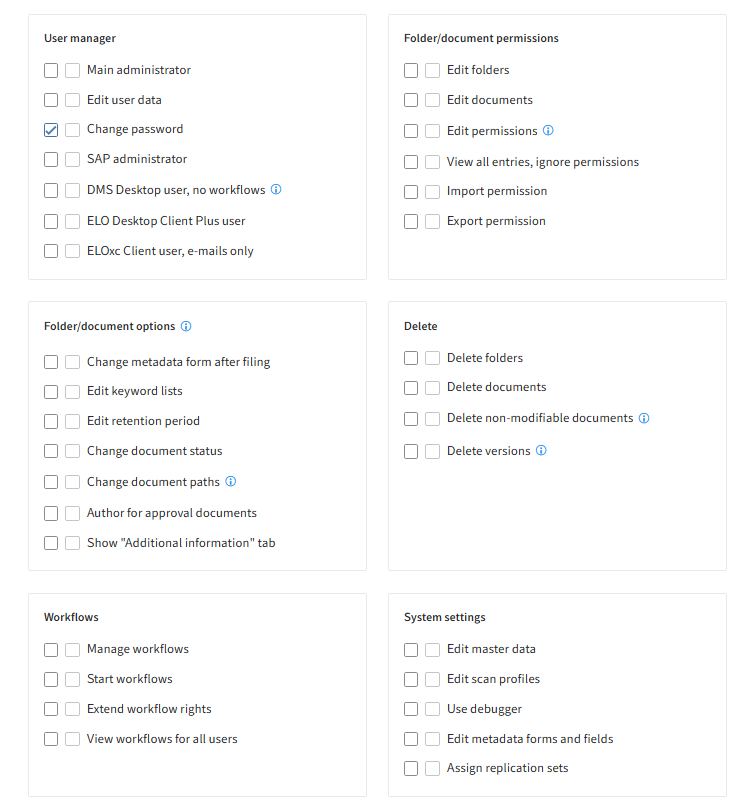
The role group ELO_ViewUsers (minimal rights) can have the following right:
- Change password
# ELO standard users
The members of this group have extended rights permitting them to edit documents and metadata. Depending on their rights, they can change or delete documents and folders, change, print, and export metadata, and start and edit workflows.
Typical tasks for these users are to file new documents to the ELO repository and/or to edit them.
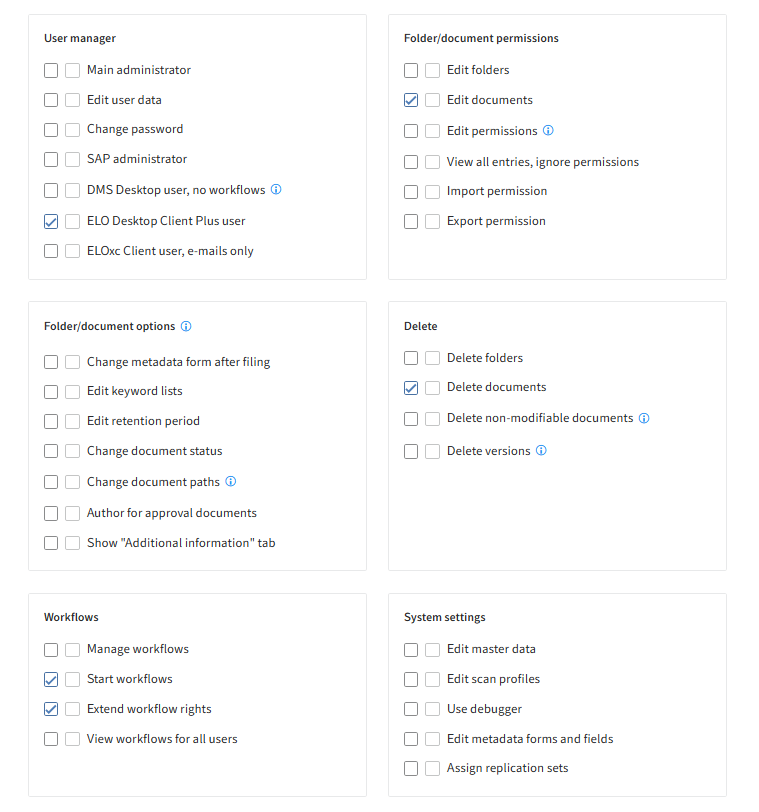
The role group ELO_StandardUsers (basic rights for editing documents) can have the following rights:
- ELO Desktop Client Plus user
- Edit documents
- Delete documents
- Start workflows
- Extend workflow rights
# ELO power users
The members of this group are authorized to do more technical and administrative tasks in ELO. Typically, they edit the folder structure in ELO and its permissions concept. They implement the repository structure with static or dynamic folders, or with default indexes that can be used by other users.
They can edit documents as well as document options or change the expiration date and document status. They can delete non-modifiable documents and versions. They can check the status of workflows they are not involved in.
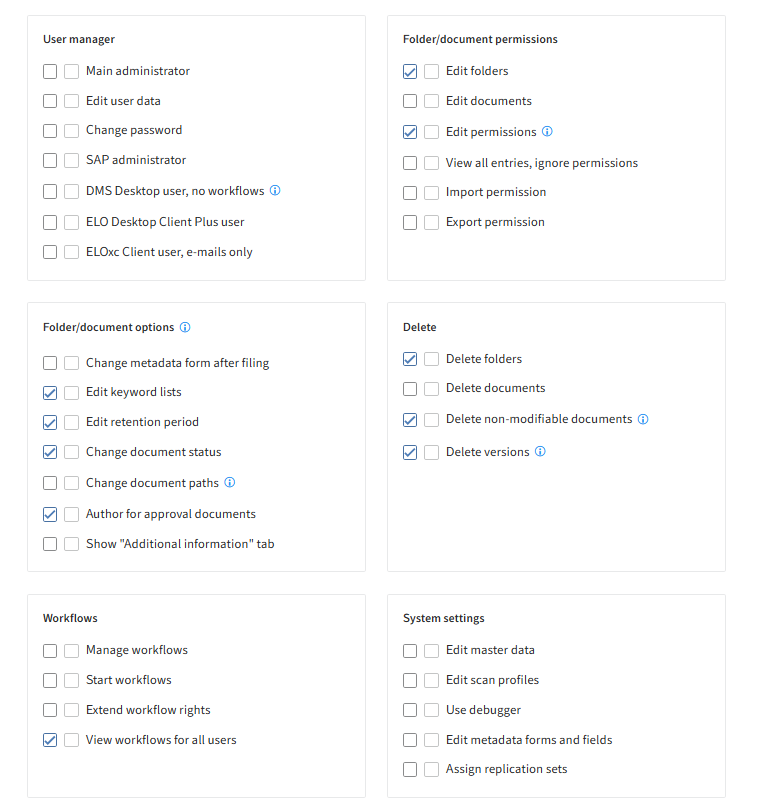
The role group ELO_PowerUsers (extended rights including editing the folder structure) can have the following rights:
- Edit folders
- Delete folders
- Edit permissions
- Edit keyword lists
- Edit retention period
- Author for approval documents
- Delete versions
- View workflows for all users (check)
- Delete non-modifiable documents
- Change document status
# ELO area administrators
The members of this group can manage repository settings for the users they administer as well as their substitutes. They act as administrators for their own departments, are familiar with internal processes, and create the required workflow templates. They know what data has to be entered when filing documents and define the required metadata forms and keyword lists. They can create stamps and edit font colors.
ELO area administrators are not responsible for editing and working with documents, but for structure, processes, and keeping the repository in order. They also perform monitoring tasks.
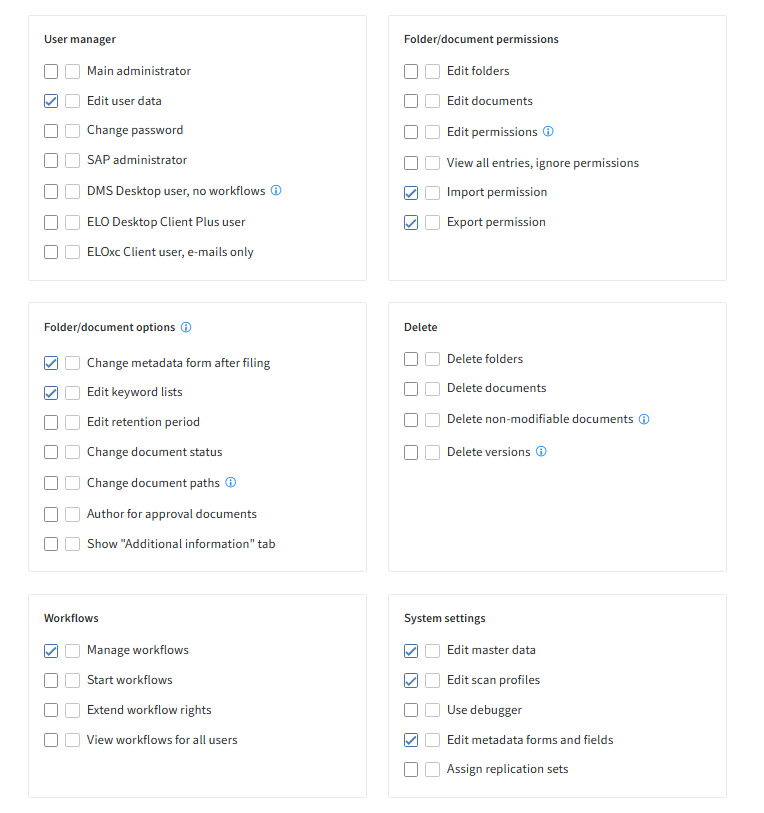
The role group ELO_AreaAdministrators (settings in the repository) can have the following rights:
- Import permission
- Export permission
- Edit metadata forms and fields
- Edit keyword lists
- Change metadata form after filing
- Edit master data
- Manage workflows
- Edit user data (only for users they administer)
- Edit scan profiles
# ELO administrators
The members of this group can manage settings in the configuration, as well as scan profiles, substitutes, and user data for all other users. They can manage organizational units, assign replication sets, remove locks, manage and move document files in the document system, back them up, or delete them permanently.
ELO administrators do not work with folders or documents in the repository, but instead generally perform administrative tasks only.
